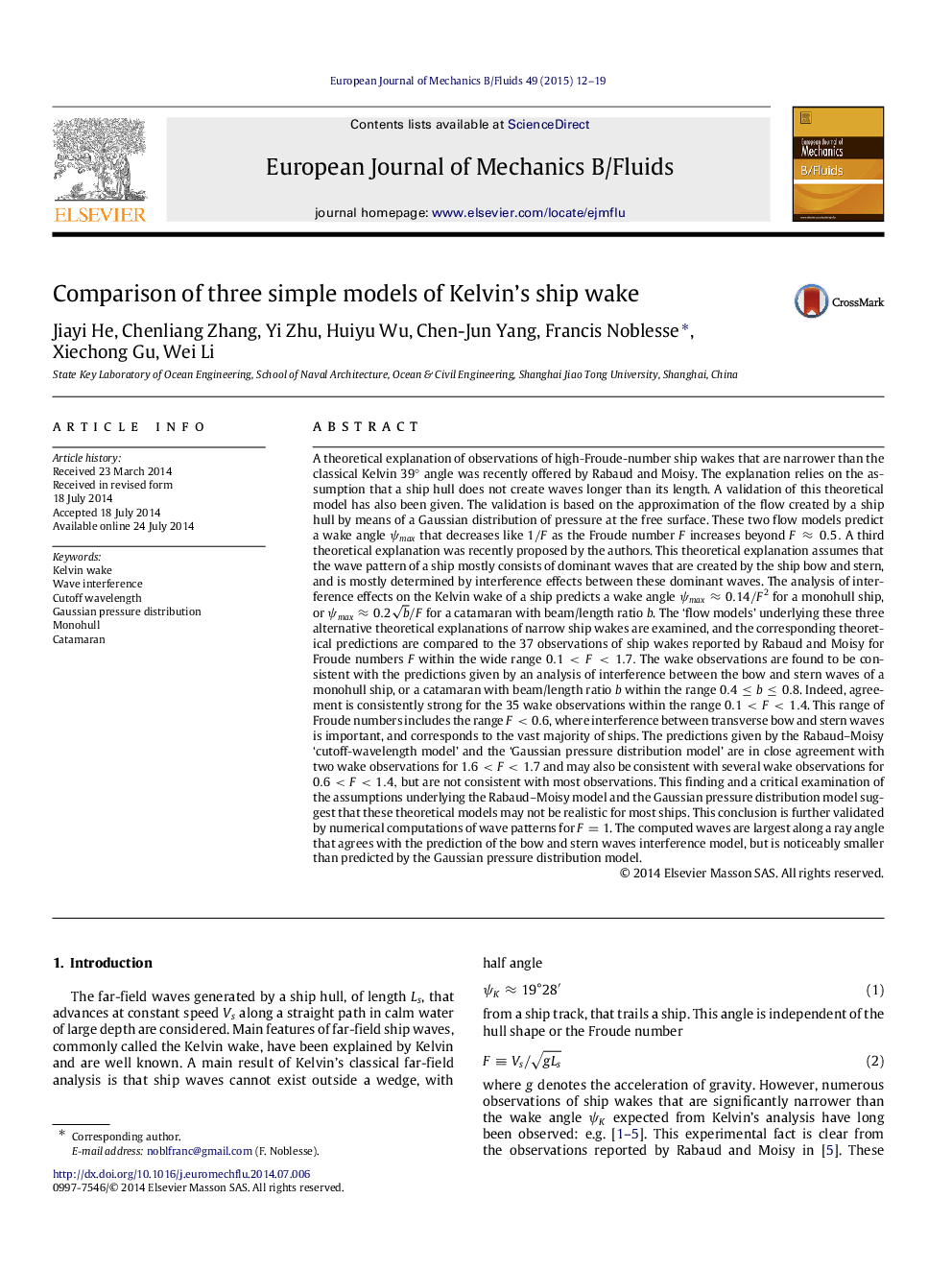| Article ID | Journal | Published Year | Pages | File Type |
|---|---|---|---|---|
| 7051347 | European Journal of Mechanics - B/Fluids | 2015 | 8 Pages |
Abstract
A theoretical explanation of observations of high-Froude-number ship wakes that are narrower than the classical Kelvin 39â angle was recently offered by Rabaud and Moisy. The explanation relies on the assumption that a ship hull does not create waves longer than its length. A validation of this theoretical model has also been given. The validation is based on the approximation of the flow created by a ship hull by means of a Gaussian distribution of pressure at the free surface. These two flow models predict a wake angle Ïmax that decreases like 1/F as the Froude number F increases beyond Fâ0.5. A third theoretical explanation was recently proposed by the authors. This theoretical explanation assumes that the wave pattern of a ship mostly consists of dominant waves that are created by the ship bow and stern, and is mostly determined by interference effects between these dominant waves. The analysis of interference effects on the Kelvin wake of a ship predicts a wake angle Ïmaxâ0.14/F2 for a monohull ship, or Ïmaxâ0.2b/F for a catamaran with beam/length ratio b. The 'flow models' underlying these three alternative theoretical explanations of narrow ship wakes are examined, and the corresponding theoretical predictions are compared to the 37 observations of ship wakes reported by Rabaud and Moisy for Froude numbers F within the wide range 0.1
Related Topics
Physical Sciences and Engineering
Chemical Engineering
Fluid Flow and Transfer Processes
Authors
Jiayi He, Chenliang Zhang, Yi Zhu, Huiyu Wu, Chen-Jun Yang, Francis Noblesse, Xiechong Gu, Wei Li,
